Category: Culture and Heritage
Culture and heritage or cultural heritage? We’ll try to explore all directions. Verdon Xp offers whitewater activities. For those expecting university-level articles. This may not be the best place.
By “heritage” or “cultural heritage” we mean the heritage handed down to us by the Verdon’s former inhabitants. To make things a little clearer, we thought it would be useful to divide this section into four subsections.
History
A valley occupied since prehistoric times, and even before that by lemurs… Close to Combs sur Artuby, Julius Caesar set up his legions in what is now Camps Juers, one of the largest military camps in Europe. Then came the religious wars and, closer to home, the resistance during the Second World War. A valley that tells its own story!
The region’s rich historical heritage is well worth a visit.
From prehistory to antiquity:
The first traces of human occupation in the Verdon go back to prehistoric times. Remains of carved stone tools have been discovered in the gorges, attesting to the presence of hunter-gatherers as early as the Palaeolithic. During Antiquity, several Celtic tribes settled in the region, leaving behind oppida on the heights, such as La Colle.
Roman times:
The arrival of the Romans in the 1st century BC marked a turning point in the history of the Verdon. They built agricultural villas, roads and aqueducts, such as the one at Riez, which supplied the city of Aix-en-Provence. The region thus became a center of agricultural production and an important communications axis.
Middle Ages:
The Middle Ages saw a period of upheaval in the Verdon. Barbarian invasions and feudal conflicts weakened the region. Numerous villages were fortified and castles built, such as the Château de Gréasque and the Château d’Aiguines. It was also during this period that monasteries developed, playing an important role in the spiritual and economic life of the region.
Modern era:
The modern era brought renewed prosperity to the Verdon. Agriculture expanded, new crops were introduced and crafts flourished. The region also becomes a center for silk production.
19th century:
The 19th century is a century of major transformations in the Verdon. Construction of roads and railroads opened up the region and encouraged the development of tourism. Major development projects were undertaken, including the construction of the Sainte-Croix and Sillans dams.
he 20th century:
The 20th century was marked by two major events: the creation of the Verdon Regional Nature Park in 1997 and the construction of the five dams. These events made it possible to preserve the natural beauty of the site and develop sustainable tourism.
Today, the Verdon’s historical heritage is rich and varied. It includes archaeological sites, hilltop villages, castles, churches and museums. It allows you to retrace the region’s history from prehistoric times to the present day, and to discover the daily lives of Verdon’s inhabitants through the centuries.
Verdon Lakes
Culture and heritage? The Lacs du Verdon, located in the Verdon Regional Nature Park, offer a spectacular landscape of gorges, lakes and mountains. And yes, the five man-made lakes of the Verdon would not exist without man’s efforts. In fact, they are part of the heritage that everyone can enjoy during the summer season.
But the region also boasts a rich culture and heritage that’s well worth a visit.
The Verdon villages
Not to be outdone, the Verdon park is made up of 42 communes and just as many charming Provencal villages. We’ll tell you all about them in a few articles. As you travel along the shores of the lakes, you’ll discover charming perched villages like Sainte-Croix-du-Verdon, Aiguines and Moustiers-Sainte-Marie. These villages have retained their authentic Provencal character, with narrow streets, stone houses and shady squares.
-
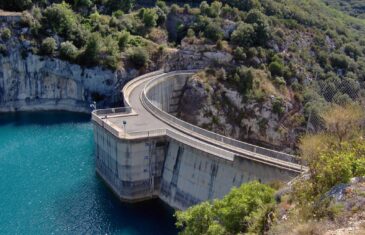
Construction of lake Sainte-Croix-du-Verdon
Before the construction of Lake Sainte-Croix-du-Verdon, one must imagine a valley with gentle slopes with a landscape shaped by the human presence. Lavender fields, truffle oaks, wheat fields, vines and olive trees were perpetuated there by the local populations over the centuries. Construction of Lake Sainte-Croix-du-Verdon, the first tests The construction of Lake Sainte-Croix-du-Verdon had…
-
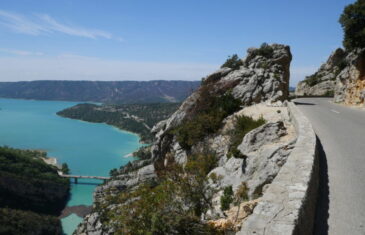
Lake Sainte-Croix-du-verdon, Rafting and canoe?
No rafting possible on Lake Sainte-Croix-du-Verdon. And yes, for the practice of rafting, you need rapids! Difficult to find on a lake. For water sports enthusiasts, go rather to the top of this page and click on “Activities” For others, welcome to this article or we will tell you a little about this that you…
-
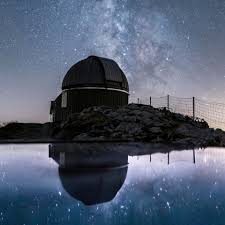
Mount Chiran Astronomical Observatory
The Mount Chiran Astronomical Observatory now belongs to an association that welcomes you for an evening under the stars. The Mont Chiran observatory is located in the Verdon Regional Natural Park at 1905 meters above sea level. Many of you contact us about the observatory. Unfortunately, we cannot give you more precise information. We are…
-
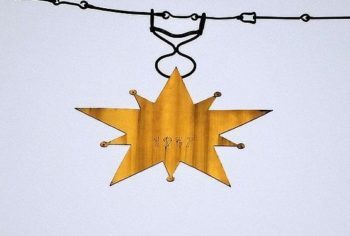
Moustiers-Sainte-Marie and the legends of the star
Moustiers-Sainte-Marie, one of the most beautiful villages in France There is evidence of the presence of man since prehistoric times. The village in the lines we know today, was founded in the 5th century by some monks. At the crossroads of the Gorges du Verdon, Moustiers-Sainte-Marie is today perceived as one of the most beautiful…
-
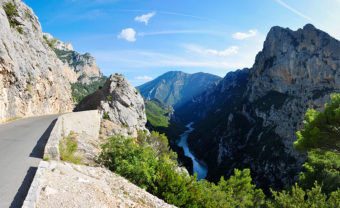
Verdon Gorges, the essential road trip
The road trip of the Verdon gorges is particularly appreciated. Indeed, many vehicles travel on these roads in summer. We will see here two courses which complement each other and even form a loop. There is no real order to follow, it is up to you. On these narrow and winding roads, the traffic is…
-

Verdon and its marvelous lavender landscapes
The Verdon is surrounded by lavender landscapes. It has existed for more than 2000 years on the shores of the Mediterranean. In France, it is cultivated only in the south-east. In the three departments of the Alpes de Haute Provence, the Drôme and the Vaucluse. It normally flowers from mid-June to mid-July on the Valensole…
-
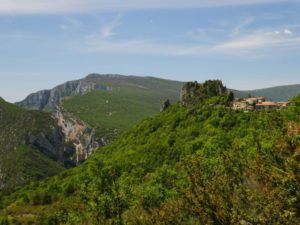
Rougon village and Isidore Blanc, the stage manager
The village of Rougon, perched on its rocky outcrop, was the place where Isidore Blanc taught at the beginning of the 20th century. Rougon Village Coming from Castellane, the village of Rougon is located about ten kilometers before La Pallud, on the D952. An Eagle’s nest perched at an altitude of 930 m. Allow approximately…
-
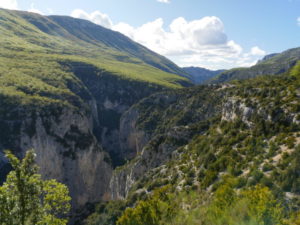
The Route des Cretes, Verdon Gorges
A route des Cretes generally offers magnificent views in a mountainous tourist region. The route des cretes des Gorges du Verdon – D23 is one of these and will not leave you indifferent. The route des Cretes, Verdon Gorges (D23) It was built and moved in large part by the inhabitants of La Pallud between…
-
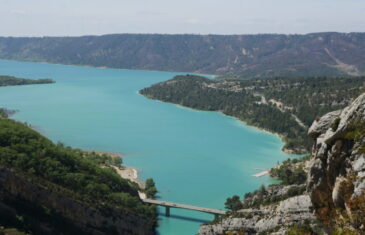
Lake Sainte Croix, Lake Castillon… The five lakes of Verdon
The five lakes of Verdon Castillon Lake, Chaudanne Lake, Sainte Croix du Verdon Lake, Quinson Lake and Esparron Lake. These are all artificial lakes built in the 20th century for the production of electricity and various human needs. Lake Castillon With an area of 500 hectares, it stretches for almost 8 kilometers. Work began…
-
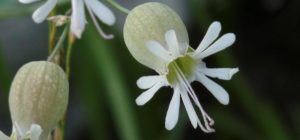
Regional Natural Park of Verdon, the Guardian of the Temple
Regional Natural Park of Verdon Created on March 3, 1997. Like any Regional Natural Park, it ensures that the economic development of its territory is harmonized with the conservation and enhancement of its natural heritage. Thus, they differ from the National Natural Parks which are territories protected from human activity. In addition, surrounded by culminating…
